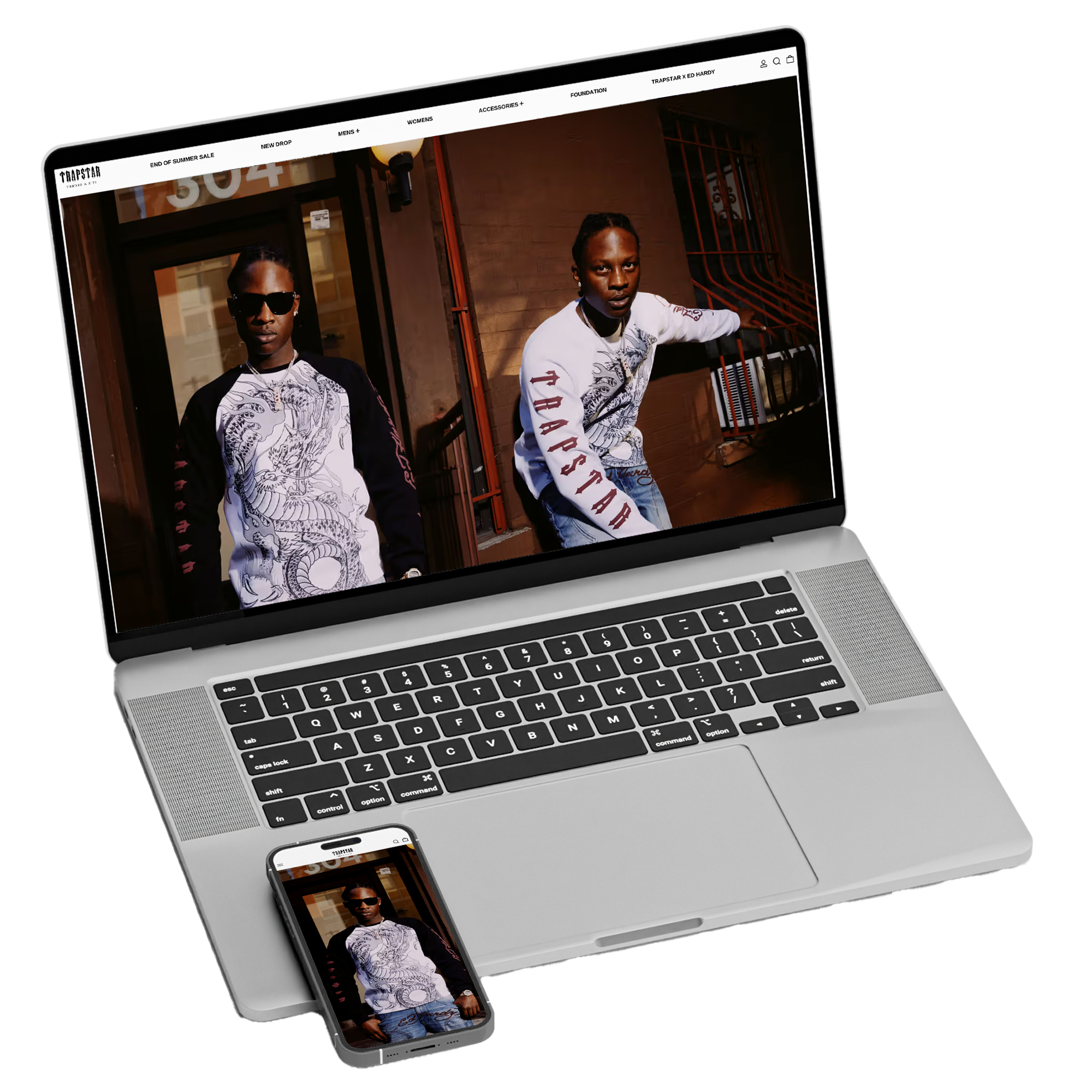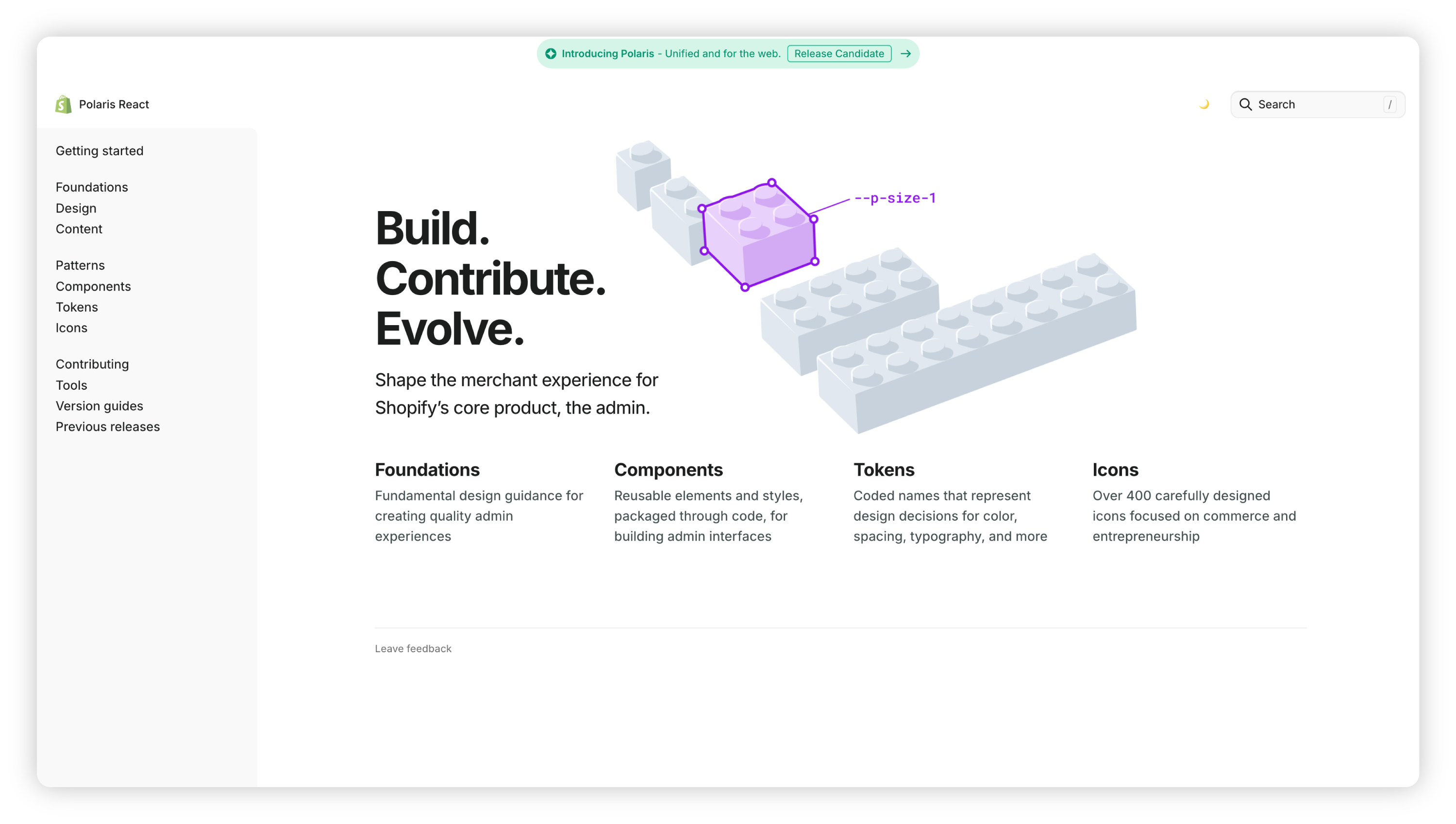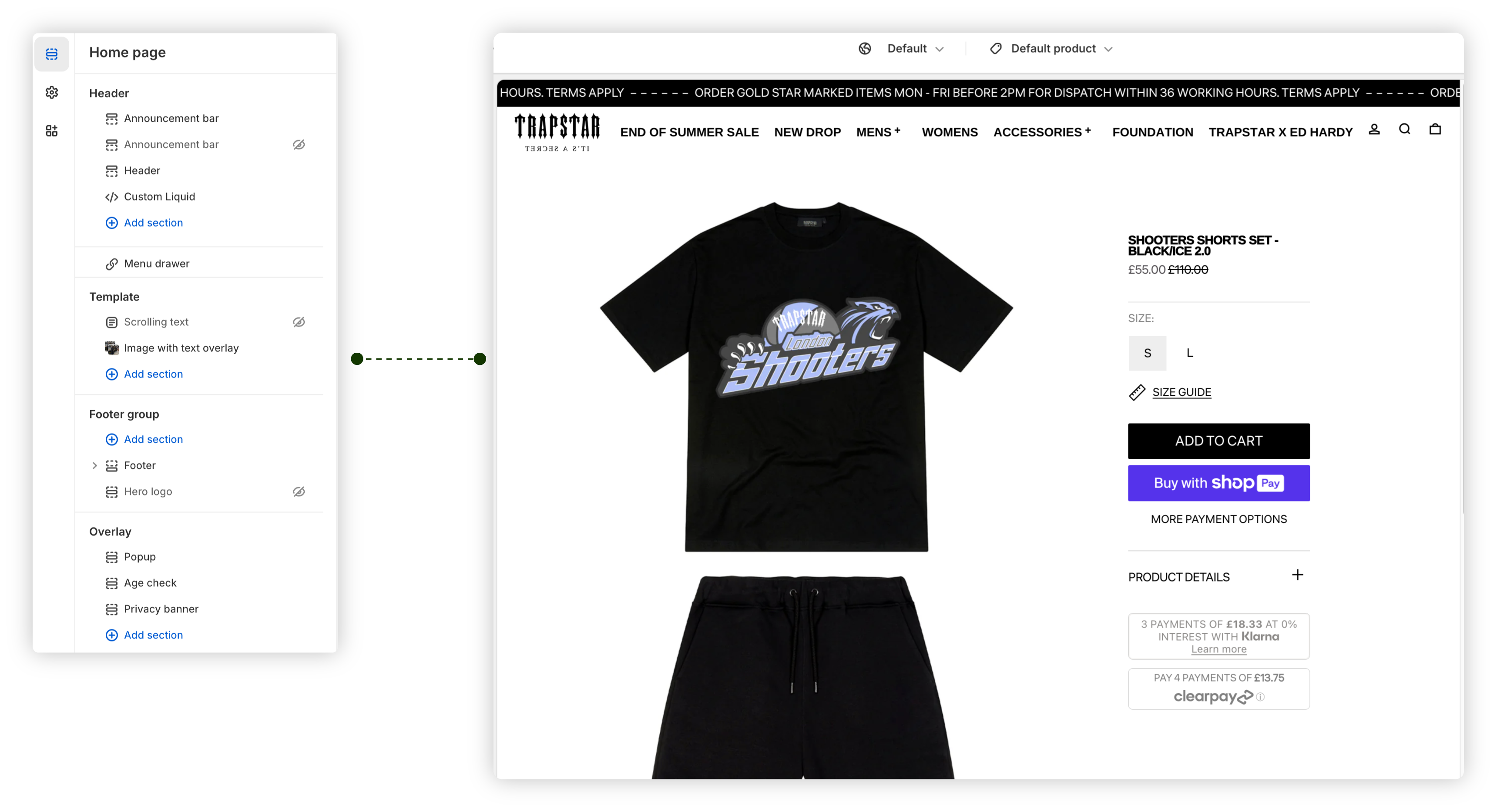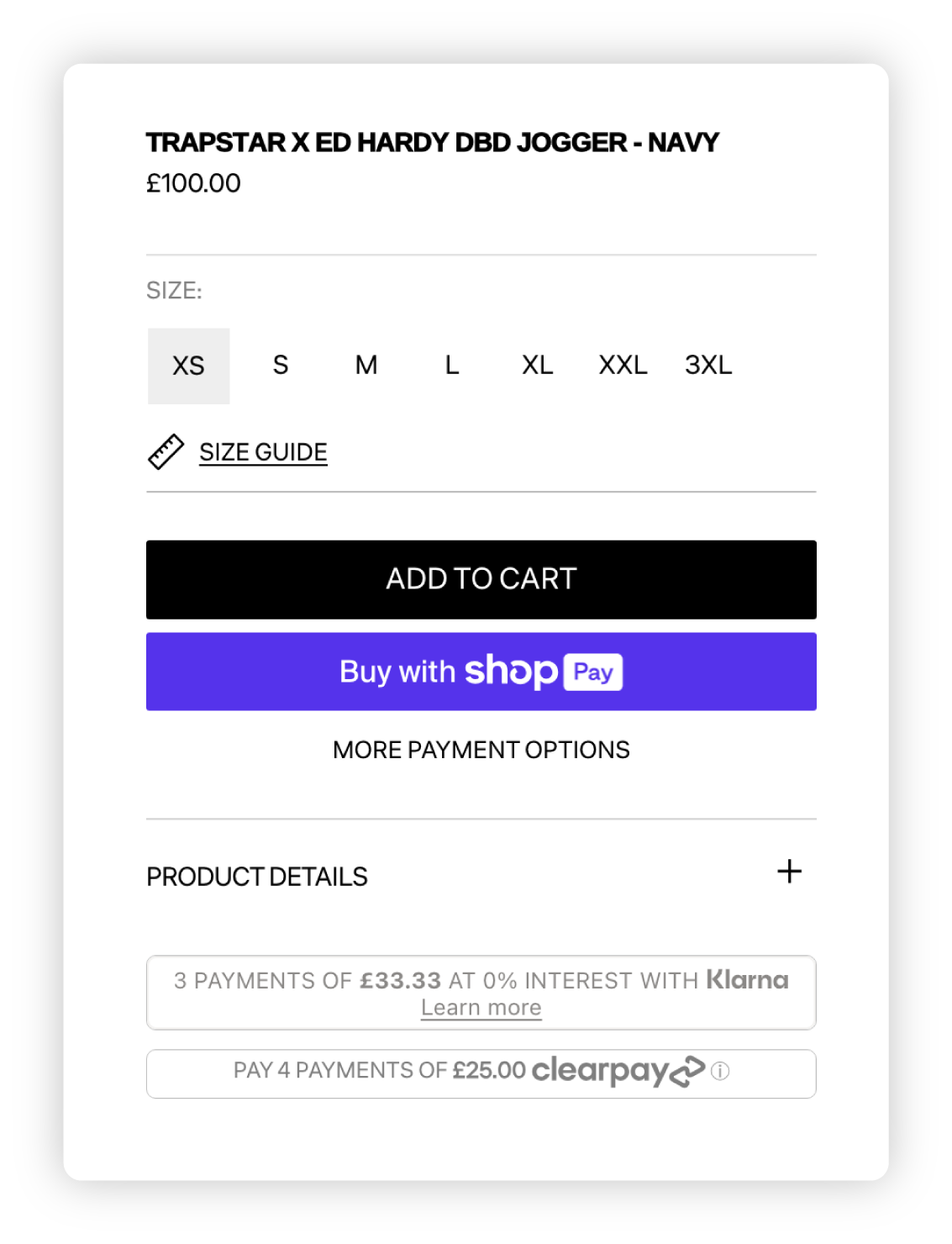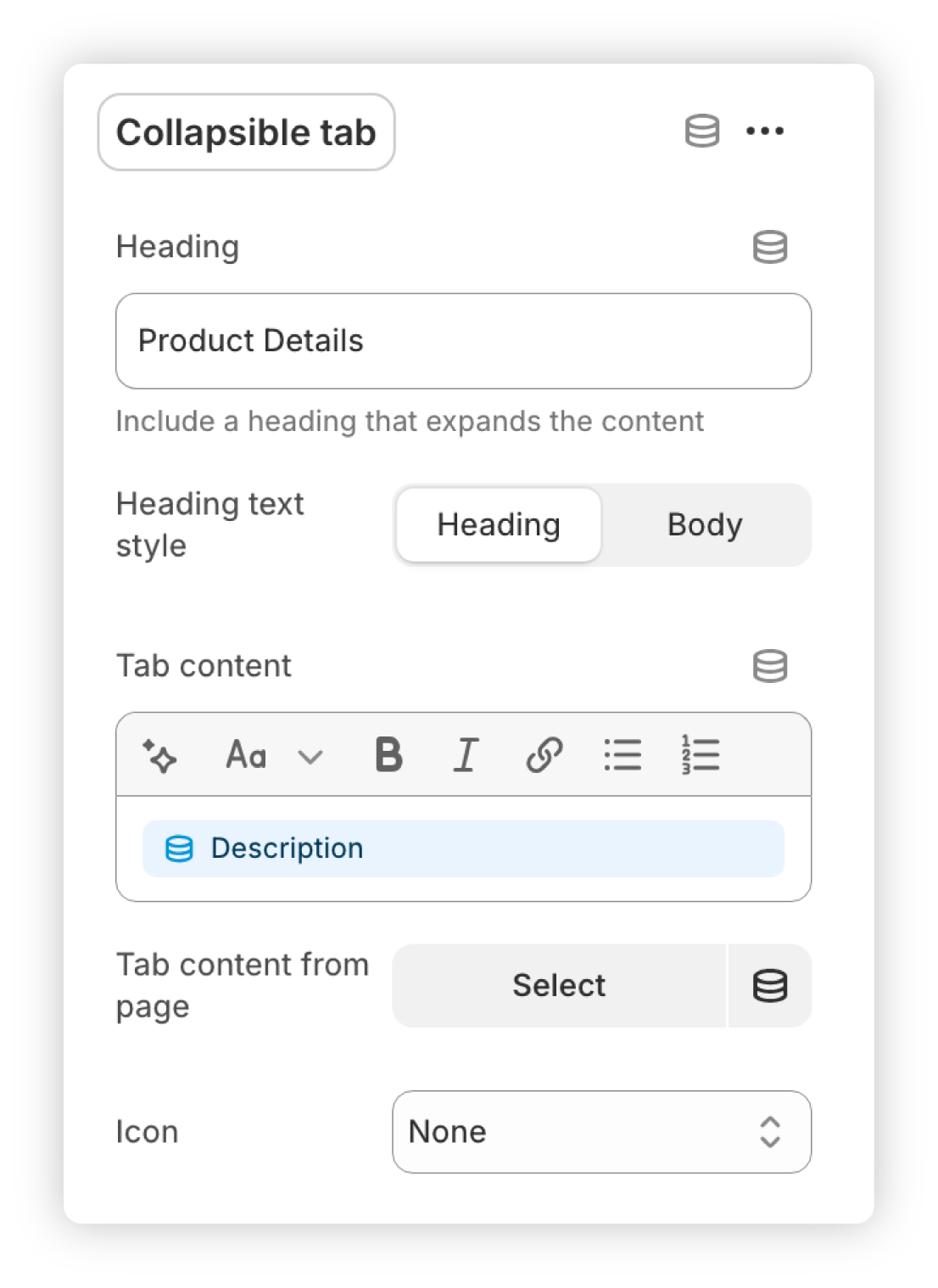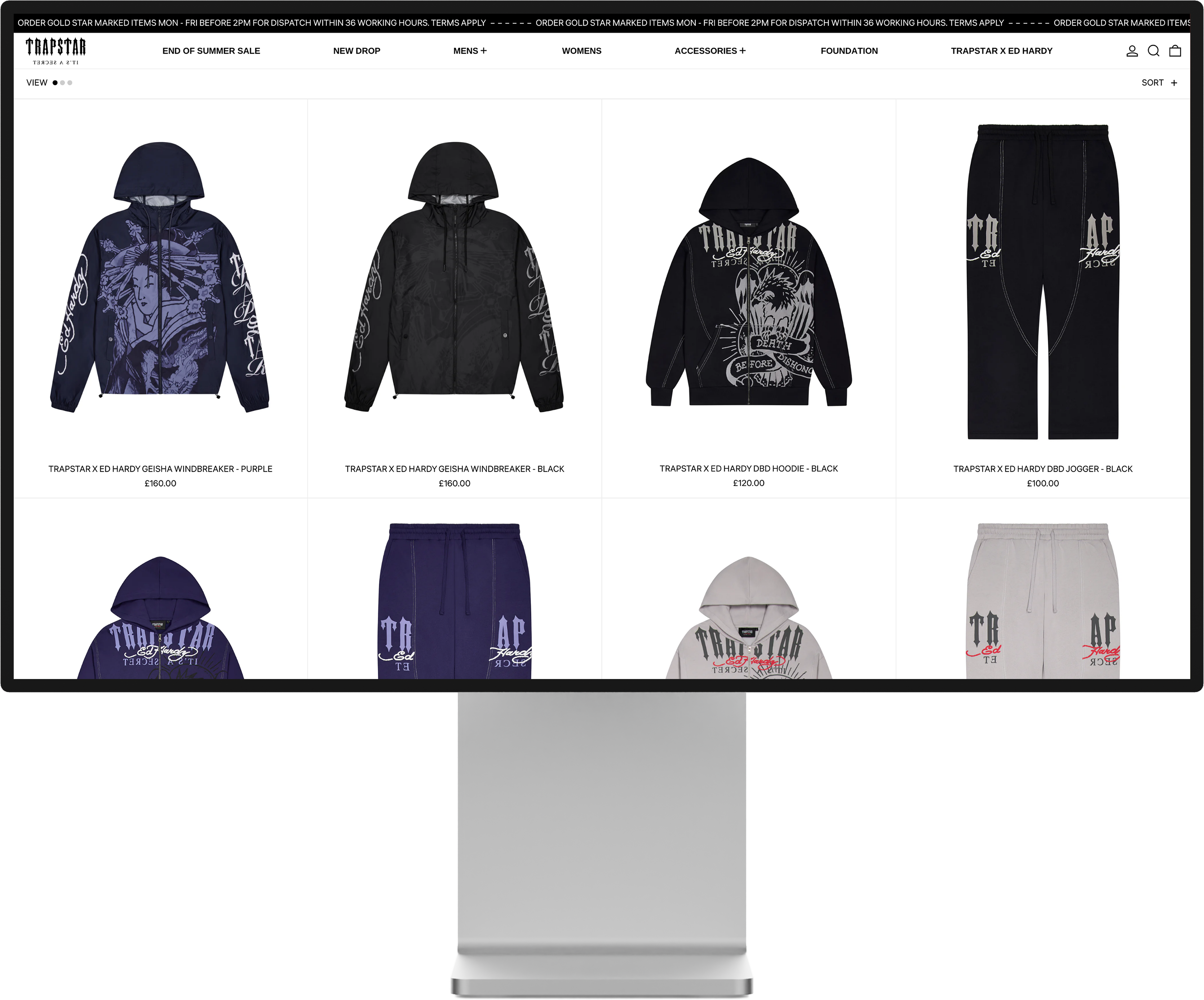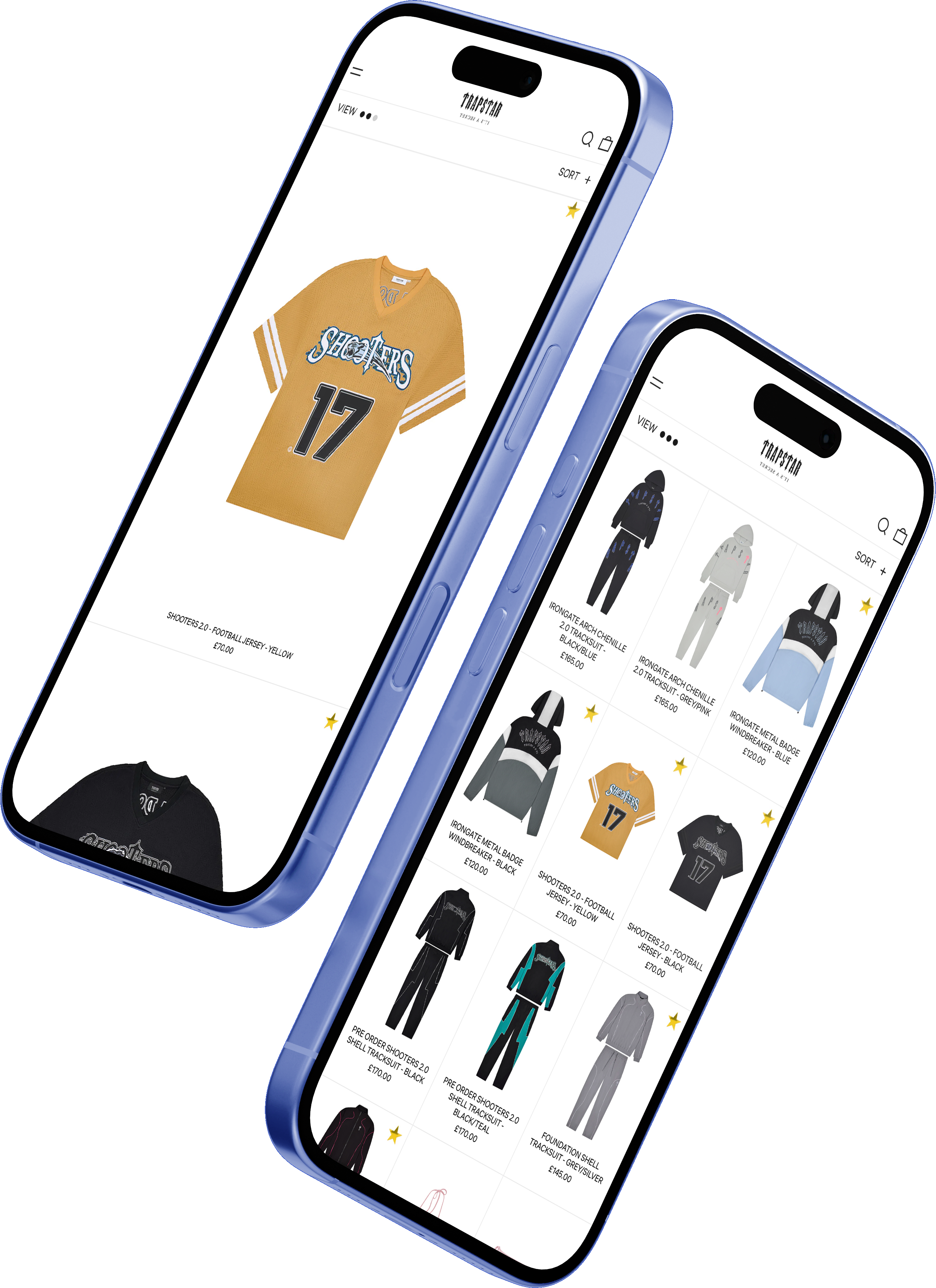#1 Streetwear brand
Trapstar is a London born streetwear label that started in the early 2000s when three friends began selling bold, DIY hoodies and tees through underground pop-ups. Blending the grit of UK street culture with rebellious design, the brand rose fast. Worn by grime icons at home and global stars like Rihanna, Jay-Z and Central Cee. Today, Trapstar stands as the biggest streetwear brand in the UK, known for its gothic logos, cryptic slogans, and must-have limited drops that keep it authentic and influential.
Brand
Trapstar
Role
UI/UX Designer
Location
London, England
Sector
Fashion
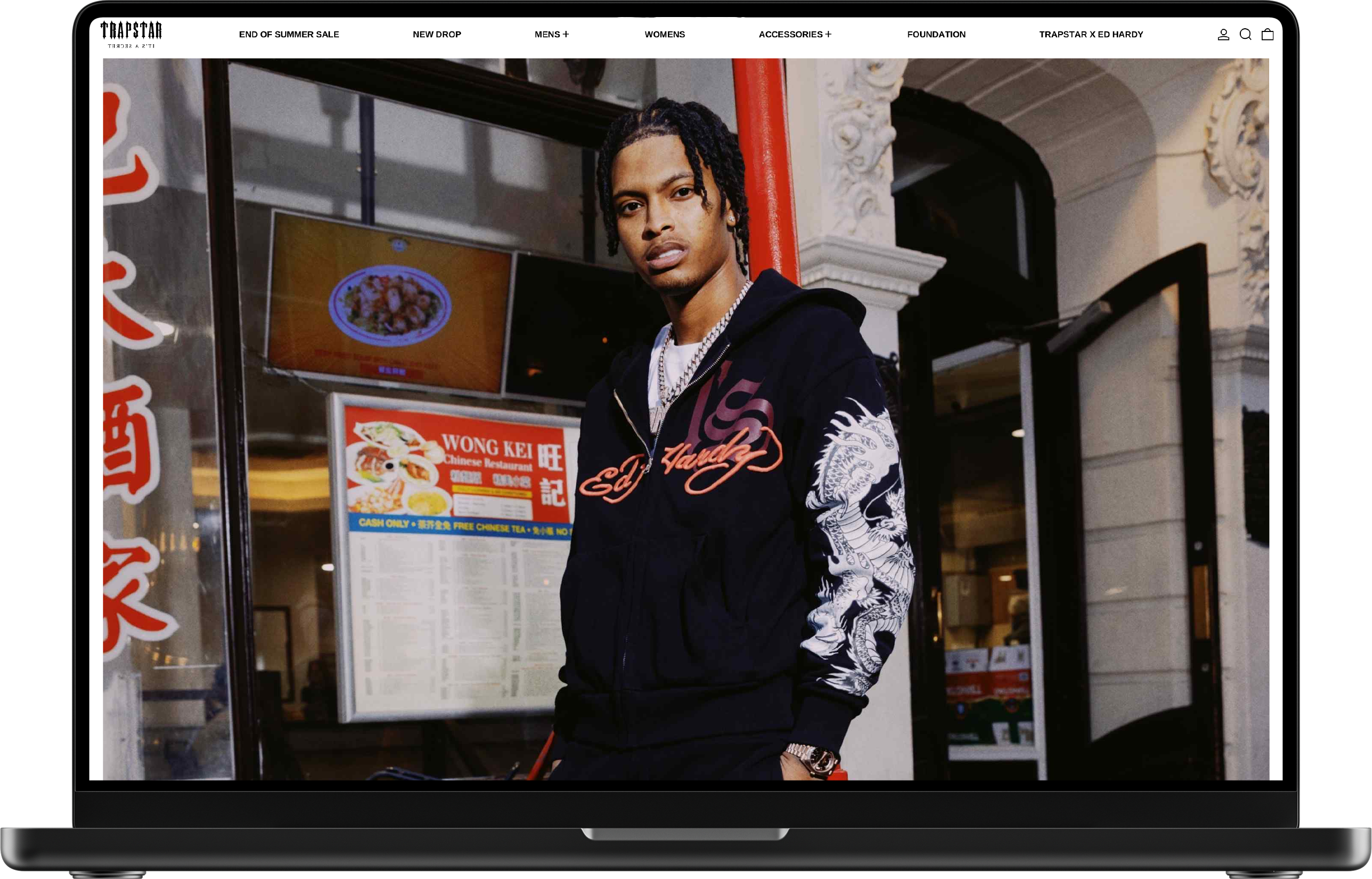
The challenge
At iCommerce, the biggest challenge I faced was balancing fast turnarounds with the need for high-quality design across multiple brands. Projects often moved quickly, with most client communication happening over Slack, which meant I had to adapt and deliver without losing attention to detail.
Working across different sectors came with its own set of challenges. I had to quickly understand each brand’s identity while also adapting to the specific design requirements that mattered within its industry. Each project demanded a different approach, from learning sector-specific details to balancing brand nuances, all under tight deadlines. The challenge was shifting gears rapidly without losing consistency, ensuring every design felt on-brand and effective for the client.
Toolkit
Below is a list of the tools and technologies I used to complete this project. Selected to support the design process, streamline development, and ensure a high-quality final outcome.
XD
Slack
Photoshop
Illustrator
Shopify
